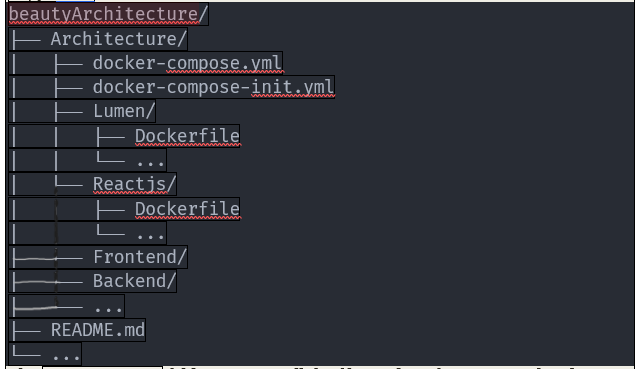Modularizing Your Application Architecture with Beauty Architecture
In modern software development, separating concerns and maintaining a modular codebase is crucial for maintainability, scalability, and collaboration. The beautyArchitecture project, created by Sihai Chen, takes this principle to the next level by isolating the architectural components of an application into a dedicated folder.
The core idea behind beautyArchitecture is to separate the application code from the infrastructure and deployment concerns. By doing so, developers can focus on writing business logic without being bogged down by architectural details, while DevOps engineers can manage the infrastructure independently.
The repository structure is organized as follows:

The Architecture/ folder contains all the files and configurations related to application deployment, such as Dockerfiles, Docker Compose files, and more. This folder essentially defines how the application should be built, packaged, and deployed across different environments.
Within the Architecture/ folder, there are separate directories for the backend (Backend/) and frontend (Frontend/) components of the application. These directories likely contain the respective codebase for each component.
Additionally, there are two subfolders: Lumen/ and Reactjs/. These folders seem to contain Docker-related configurations and files specific to the backend (Lumen) and frontend (React.js) components, respectively.
This structure allows for a clear separation between the backend and frontend codebases, while still keeping them within the same repository for easy management and collaboration. The Architecture/ folder acts as a centralized location for all deployment and infrastructure-related files, promoting better organization and maintainability.
One of the key benefits of this approach is improved collaboration between developers and DevOps engineers. Developers can focus on writing high-quality code for their respective components (backend or frontend), while DevOps engineers can manage the infrastructure and deployment processes independently. This separation of concerns promotes a more efficient and streamlined workflow, reducing the risk of conflicts and merge issues.
Additionally, beautyArchitecture promotes better code organization and maintainability. By isolating the architectural components, it becomes easier to reason about and modify the deployment configurations without affecting the application code, and vice versa. This modularity also simplifies the process of migrating to new deployment platforms or technologies, as the application code remains largely unaffected.
Overall, the beautyArchitecture project presents an innovative approach to structuring and organizing codebases, particularly for applications that require complex deployment setups or involve collaboration between multiple teams. By separating the architectural concerns from the application logic, developers can focus on their respective areas of expertise, resulting in more efficient and maintainable codebases.
Source code






